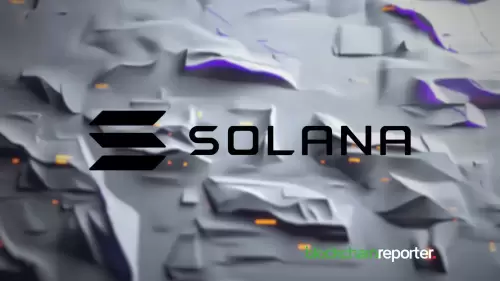 |
|
 |
|
 |
|
 |
|
 |
|
 |
|
 |
|
 |
|
 |
|
 |
|
 |
|
 |
|
 |
|
 |
|
 |
|
Articles d’actualité sur les crypto-monnaies
The Evolution of Stablecoins: From Teenage Years to Market Heroes
May 13, 2025 at 06:34 pm

Cryptocurrency is still quite a novel invention: Bitcoin (BTC) was born just 17 years ago, and it’s still in its teenage years. No wonder, this decentralized finance industry is constantly changing and developing. In this ever-evolving crypto landscape, stablecoins have emerged as heroes, facilitating the transition from traditional finance to decentralized finance.
Often overshadowed by the volatility of cryptocurrencies, including the major ones like Bitcoin and Ethereum (ETH), stablecoins offer a semblance of stability in a tumultuous market. Their pegged value to fiat currencies, primarily the world reserve currency, U.S. dollar—such as Tether (USDT) and USD Coin (USDC)—provides a reliable medium of exchange, making them increasingly attractive to both individual users and institutional investors beyond the crypto space.
The surge in stablecoin adoption
Recent data underscores the burgeoning adoption of stablecoins. According to a joint report by on-chain analysis platforms Artemis and Dune, active stablecoin wallets have surged by 53% over the past year, escalating from 19.6 million in February 2024 to over 30 million in February 2025. This significant uptick reflects a growing trust in stablecoins as a viable financial instrument, bridging the gap between conventional finance and the crypto realm.
This growth isn’t merely a numerical increase; it signifies a paradigm shift in how users perceive and utilize digital currencies. The stability offered by digital assets redeemable 1:1 with fiat currencies makes them ideal for everyday transactions, savings, and as a hedge against the volatility inherent in other cryptocurrencies.
Unsurprisingly, the United States issued timely guidelines for regulating stablecoins. The U.S. Securities and Exchange Commission issued a notice, paving the way for a more regulated and stable digital asset landscape. As Selva Ozelli, an international tax attorney and a regular columnist at Crypto.news, explained:
“The SEC notice gives examples of readily liquid assets that should back a Covered Stablecoin which include USD cash equivalents, demand deposits with banks or other financial institutions, U.S. Treasury securities, or/and money market funds registered under Section 8(a) of the Investment Company Act of 1940, and do not include precious metals or other crypto assets.”
As per data on stablecoins, Albridge internal analytics indicate that USDT retains its transactional lead in transactions and demonstrates 7% to 20% growth in month-over-month transaction volume between March 2024 and March 2025. USDC, on the other hand, remains second in the number of transactions and less popular than USDT in terms of transactional amounts, averaging at 25%. The total volume of USDT and USDC transactions varies from $85M to $198M between February 2024 and February 2025. Evidently, stablecoins are getting their momentum.
Transaction volumes rivaling traditional payment networks
The practical utility of stablecoins is further evidenced by their staggering transaction volumes. Earlier this year, an asset management firm, ARK Invest, issued a report that highlighted the growth of stablecoin adoption, whose transaction value in 2024 reached $15.6 trillion, overtaking traditional payment firms Mastercard and Visa by more than 100%. This monumental volume underscores the growing reliance on stablecoins for a myriad of financial activities, from remittances to institutional settlements.
Another report, issued by Citigroup, a multinational investment bank and financial services company, forecasts a potential fivefold increase in the stablecoin market over the next five years, possibly reaching nearly $4 trillion. Moreover, if the U.S. implements a regulatory framework, stablecoin issuers could emerge as major holders of U.S. Treasuries by 2030, potentially generating over $1 trillion in additional demand for Treasuries due to the expansion of stablecoins.
Bridging fragmented blockchains
Users and developers today encounter numerous obstacles when working across multiple blockchains. Delivering a seamless web3 user experience is already a complex task, if we want mass adoption in the crypto industry. Moving tokens between layers tends to be cumbersome, slow, and fraught with risk. Developers face the added difficulty of dealing with fragmented ecosystems, each featuring distinct tools and protocols. Meanwhile, users often face repeated challenges due to inconsistent wallet compatibility and varying user interfaces across chains.
As the crypto ecosystem becomes increasingly fragmented with multiple blockchains, the need for seamless interoperability has never been more critical. We, at Allbridge Core, address this challenge by offering a native stablecoin bridging experience, enabling seamless cross-chain swaps between EVM and non-EVM blockchains. With over a million total transfers and a total value locked exceeding $28 million, Allbridge Core exemplifies the infrastructure necessary for a cohesive DeFi environment.
Friendly regulation and institutional embrace
The maturation of the stablecoin market is not occurring in a vacuum. Regulatory frameworks are evolving to accommodate and oversee this
Clause de non-responsabilité:info@kdj.com
Les informations fournies ne constituent pas des conseils commerciaux. kdj.com n’assume aucune responsabilité pour les investissements effectués sur la base des informations fournies dans cet article. Les crypto-monnaies sont très volatiles et il est fortement recommandé d’investir avec prudence après une recherche approfondie!
Si vous pensez que le contenu utilisé sur ce site Web porte atteinte à vos droits d’auteur, veuillez nous contacter immédiatement (info@kdj.com) et nous le supprimerons dans les plus brefs délais.
-

- Velo Universe, Dex et Defi Security: naviguer dans l'avenir du trading décentralisé
- Aug 05, 2025 at 07:45 am
- Exploration de l'évolution des échanges décentralisés (DEX) en mettant l'accent sur l'univers Velo, la sécurité Defi et la transition vers des plateformes de trading transparentes centrées sur l'utilisateur.
-

- Le portefeuille Bitget révolutionne Solana avec des transactions sans gaz: une nouvelle ère pour Defi
- Aug 05, 2025 at 07:36 am
- Bitget Wallet conduit la charge pour rendre Solana plus accessible avec des transactions sans gaz, simplifiant Defi pour tout le monde. Découvrez comment cette innovation remodèle l'expérience utilisateur.
-

- Ozak Ai, Boom crypto et potentiel de retour sur investissement: est-ce la prochaine grande chose?
- Aug 05, 2025 at 07:30 am
- Plongez dans le potentiel d'Ozak Ai dans le boom de la cryptographie. Ses outils commerciaux alimentés par l'IA peuvent-ils fournir un retour sur investissement explosif? Nous explorons les tendances et les idées.
-

- Les ETF de Solana et la poursuite de tous les temps High: Sol est-il défini sur Soar?
- Aug 05, 2025 at 07:30 am
- Le buzz de Solana est de retour! La spéculation du FNB, la croissance du réseau et la manie de la pièce mème pourraient pousser Sol vers un nouvel ATH. Mais y a-t-il d'autres joueurs dans le jeu?
-

-

-

-

- Bitcoin, Michael Saylor et Stratégie: un mastodonte de transformation numérique
- Aug 05, 2025 at 07:01 am
- Explorez la stratégie de Bitcoin audacieuse de Michael Saylor, les avoirs massifs de Microstrategy et le paysage évolutif de l'adoption de la cryptographie d'entreprise. Wall Street se fait-il enfin?
-

- Les détenteurs de Bitcoin se préparent à la sortie du marché au milieu des signaux baissiers
- Aug 05, 2025 at 07:00 am
- Les détenteurs de bitcoins à long terme montrent des signes de sortie du marché en tant que statistiques clés flash les signaux baissiers, suggérant une correction potentielle malgré des prix élevés.





























































